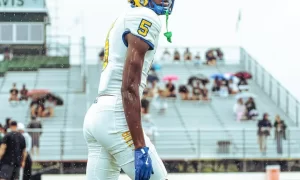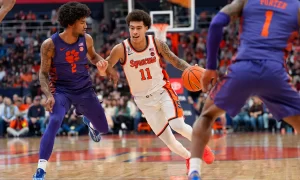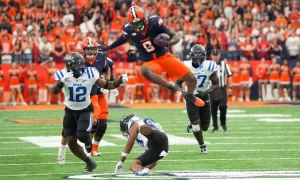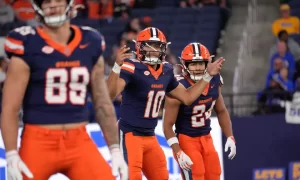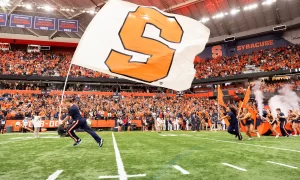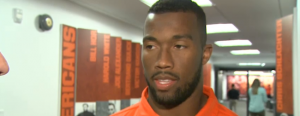 The biggest part of the transition from the Big East to the ACC is the speed of the players. For the Orange that means concern on the defensive side of the ball, where Syracuse has to react to the tempo of the game. Against Penn State and Northwestern, the defense had lapses where it looked overmatched, notably against Allen Robinson and Tony Jones. ACC teams such as Clemson and Florida State will have even faster players at every single offensive position on the field. The real question is not whether the Orange has the speed to keep up with Florida State and Clemson, but whether it has the speed to beat the next tier of conference foes like NC State, Georgia Tech, Wake Forest and Maryland. Those are where the wins need to come from if SU wants to make a bowl.
The biggest part of the transition from the Big East to the ACC is the speed of the players. For the Orange that means concern on the defensive side of the ball, where Syracuse has to react to the tempo of the game. Against Penn State and Northwestern, the defense had lapses where it looked overmatched, notably against Allen Robinson and Tony Jones. ACC teams such as Clemson and Florida State will have even faster players at every single offensive position on the field. The real question is not whether the Orange has the speed to keep up with Florida State and Clemson, but whether it has the speed to beat the next tier of conference foes like NC State, Georgia Tech, Wake Forest and Maryland. Those are where the wins need to come from if SU wants to make a bowl.
Through the first three games, the SU pass rush has had on and off success. Against Penn State, the line did a great job getting to Christian Hackenberg, getting sacks and forcing two interceptions. Against Northwestern, it wasn’t effective. There are two reasons why: Northwestern has a strong offensive line and Kain Coulter is a great runner. The Orange will need to do a better job containing the quarterback run in facing Clemson’s Tajh Boyd, Florida State’s Jameis Winston and Georgia Tech‚Äôs triple option system. The SU defensive line needs to do a lot more than simply get to the quarterback. When it cannot get there, it will need to contain him so he does not make huge plays with his legs. The defensive line has shown some athleticism (think about Robert Welch rumbling down the sideline after his interception) and they will need every bit of it against these teams.
The linebackers are the best unit on the SU defense. Even without the sideline-to-sideline speed necessary to beat the top teams in the ACC, the linebackers should be able to cover Wake, Maryland and NC State. But GT runs the ball just about every single play. The linebackers will be asked to cover faster running backs and tight ends. Marquis Sprull, Dyshawn Davis, and Cam Lynch have experience, but the closest thing they have seen to an ACC speed offense might be West Virginia with Tavon Austin and Steadman Bailey. The linebackers will play a huge role in being able to contain more mobile quarterbacks. Georgia Tech and Maryland both use the quarterback run as a big part of their offenses, with the QB in the top two rushing for each team.
The secondary will likely have trouble with the receivers around the league this season. Robinson and Jones were able to get behind the secondary for Penn State and Northwestern, respectively. The secondary is inexperienced and has had communication issues. The defense simply cannot have the breakdowns it had against Penn State that allowed Robinson to go crazy in just one half. However, while Clemson and Florida State have strong passing attacks, the next level teams are more run based and struggle through the air. Boston College’s Chase Rettig struggled against USC last weekend. Pitt is working in Rutgers’ transfer Tom Savage. Georgia Tech has just 27 pass attempts through two games. The secondary should be effective against the teams the Orange will need to beat in order to stay around .500.
The Orange does not have the team speed to keep up with Clemson and Florida State. But few do, those two teams are top 10 squads and National Championship contenders. The Orange need to be fast enough to take on the next group of ACC foes like BC, Pitt, Maryland, Wake Forrest, Georgia Tech and NC State. If not, the only thing going fast will be SU’s bowl hopes.
Posted: Seth Goldberg




